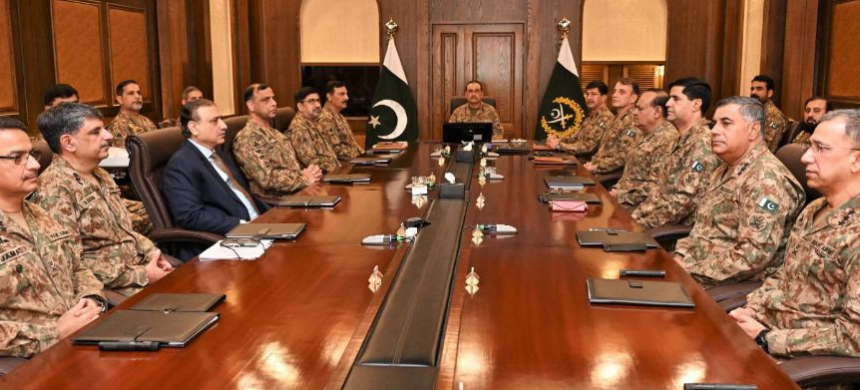Ishaq Dar Details Pakistan’s Strategic Response During India-Pakistan Crisis
Deputy Prime Minister Ishaq Dar revealed that a comprehensive response strategy was developed through joint civil-military leadership to handle the escalating tensions with India, ensuring a coordinated and effective approach.
In an exclusive interview during Samaa TV’s special transmission, “Samaa Control Room”, Dar emphasized that Prime Minister Shehbaz Sharif led the crisis management from the start, continuously informing the global community about developments. He acknowledged that Pakistan stayed in constant communication with over 100 embassies, ensuring diplomatic engagement during the conflict.
Read more: Maryam Nawaz Praises Pakistan Air Force (PAF)
National Unity and Leadership in Crisis
Dar highlighted that Pakistan Muslim League-Nawaz (PML-N) President Nawaz Sharif played a key role in advisory consultations, while Prime Minister Shehbaz Sharif consulted with various political parties to present a unified front. He recalled the Pahalgam incident, where despite being in Ankara, PM Shehbaz led diplomatic efforts to ensure the world understood Pakistan’s position: “We had to send a united message to the world.”
From April 23 to May 7, tensions escalated as India launched attacks. Dar revealed, “When India launched its attack, we responded by downing their aircraft,” describing the precise military response, where Pakistani pilots shot down five enemy aircraft.
Strategic Military and Diplomatic Responses
Dar outlined Pakistan’s diplomatic actions during the crisis, stating that the UN Security Council members were kept informed about developments, particularly about Pahalgam, ensuring an impartial investigation. He mentioned that by May 5, global calls for restraint emerged, but Pakistan made it clear that any attack would be met with retaliation.
“We did exactly what we said,” Dar remarked, highlighting the military success in neutralizing multiple Indian missile strikes, with three missiles landing in Amritsar and one entering Pakistani airspace, which was neutralized.
Escalation and Ceasefire Agreement
By May 8, Pakistan shot down 29 Indian drones, and the situation reached a peak on May 9 when Indian forces attacked Pakistani military bases. Dar quoted PM Shehbaz declaring, “Enough is enough,” noting that US officials confirmed that no F-16 aircraft had been downed.
A comprehensive response strategy was crafted with civil-military collaboration, focusing on managing the situation with precision. On May 9, a third country advised Pakistan to accept a ceasefire, leading to resumed diplomatic communications on May 10.
Reaffirming National Strength
Dar strongly criticized the perception of India’s military supremacy, calling such narratives unacceptable. He confirmed that a Director General Military Operations (DGMO) level contact was scheduled, with the discussion set to occur in a neutral location.
Role of the United States and Future Steps
In his conclusion, Dar acknowledged the key role of the United States in facilitating communication between Pakistan and India, emphasizing that the next phase of the peace process would soon unfold.
Bilateral Call with Algerian Foreign Minister
In a separate diplomatic development, Dar also received a telephone call from Algerian Foreign Minister Ahmed Attaf, who commended Pakistan’s commitment to regional peace and expressed support for the ceasefire agreement between Pakistan and India, describing it as a “positive step” toward lasting peace in the region. Both leaders agreed to maintain close cooperation on multilateral forums to pursue shared objectives.











